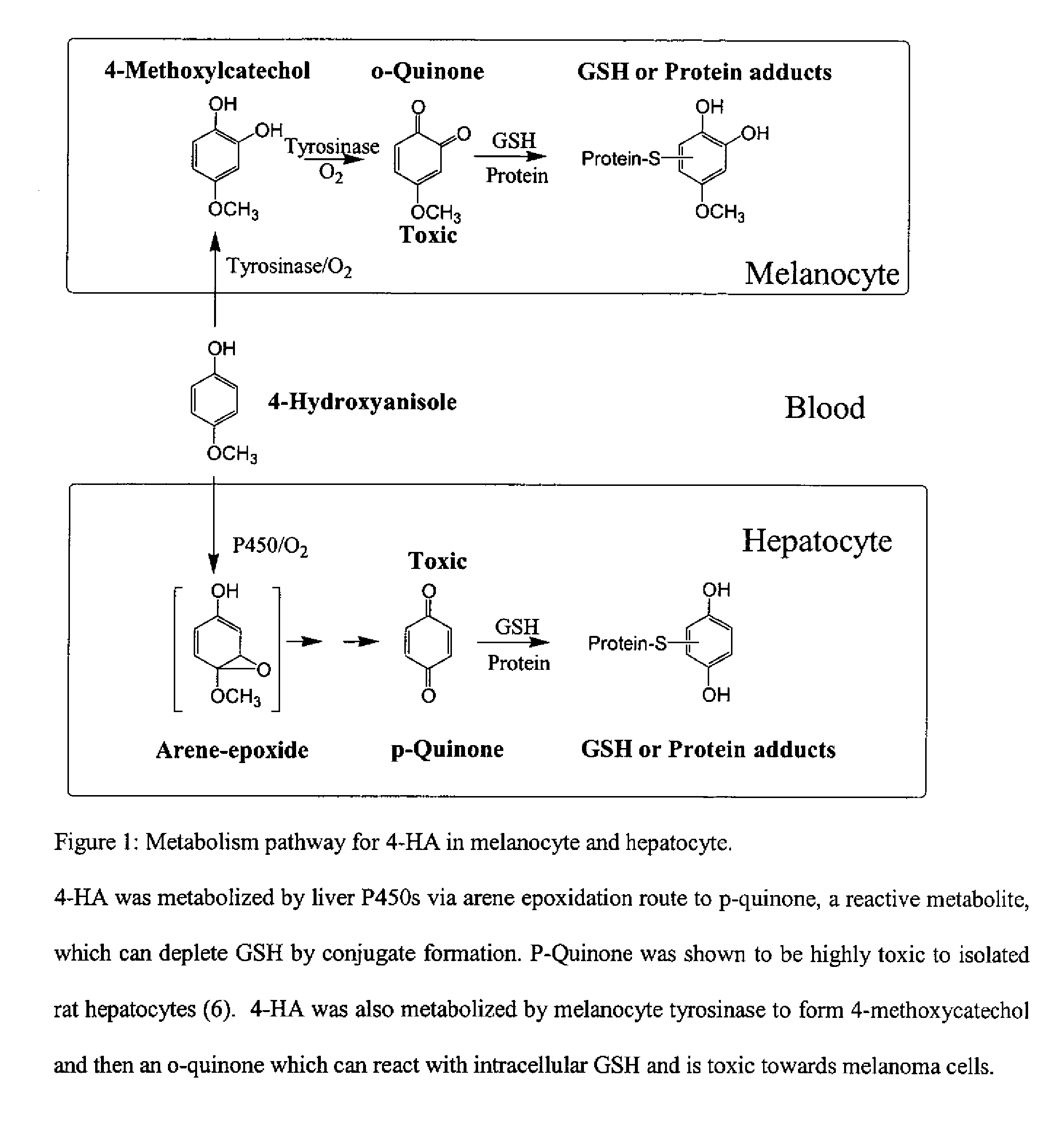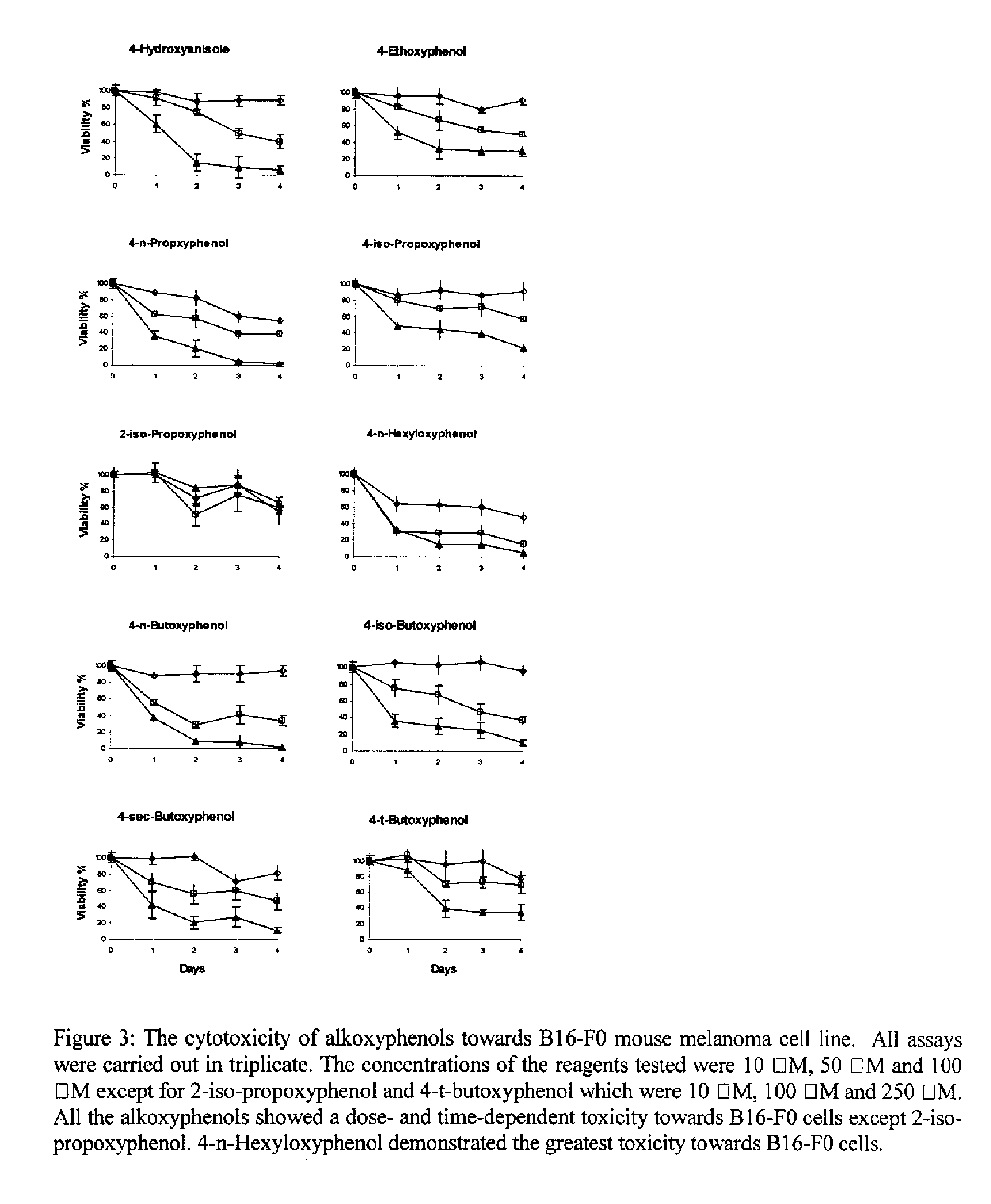Method for treating tumor cells resulting in minimal liver toxicity
a liver toxicity and tumor cell technology, applied in the direction of biocide, drug composition, peptide/protein ingredients, etc., can solve the problems of high treatment failure rate of surgical intervention, melanoma toxicity, intolerable side effects, etc., to inhibit tumor growth, induce tumor cells, and minimal liver toxicity
- Summary
- Abstract
- Description
- Claims
- Application Information
AI Technical Summary
Benefits of technology
Problems solved by technology
Method used
Image
Examples
example 1
[0026] UV-VIS spectroscopy of tyrosinase mediated metabolism of alkoxyphenols The spectra of a solution containing alkoxyphenol (100 □M) and tyrosinase (20 U / mL) were recorded in the absence and presence of GSH (200 □M) using a GBC UV-Visible spectral spectrophotometer (GC Scientific, Australia). The spectra of the mixture were obtained when GSH was added to the solution either before or after the addition of tyrosinase. The control spectrum was that of the respective alkoxyphenol solution (100 □M) in phosphate buffer [0.1 M (pH 7.4) containing DETAPAC (1 mM)].
[0027] Tyrosinase Mediated GSH Depletion Assay
[0028] Tyrosinase (10 □L; 2500 U / mL) was added to a mixture of alkoxyphenol (100 □M) and GSH (200 □M) in a final volume of 1 mL phosphate buffer (0.1 M, pH 7.4, DETAPAC 1 mM). The mixture was pre-incubated for 30, 90, and 180 min at 37° C. A 250 □L aliquot was added to trichloroacetic acid (25 □L; 30% w / v), vortexed and left at room temperature for 5 min. A 100 □L aliquot of the ...
PUM
| Property | Measurement | Unit |
|---|---|---|
| pH | aaaaa | aaaaa |
| volume | aaaaa | aaaaa |
| temperature | aaaaa | aaaaa |
Abstract
Description
Claims
Application Information
 Login to view more
Login to view more - R&D Engineer
- R&D Manager
- IP Professional
- Industry Leading Data Capabilities
- Powerful AI technology
- Patent DNA Extraction
Browse by: Latest US Patents, China's latest patents, Technical Efficacy Thesaurus, Application Domain, Technology Topic.
© 2024 PatSnap. All rights reserved.Legal|Privacy policy|Modern Slavery Act Transparency Statement|Sitemap



